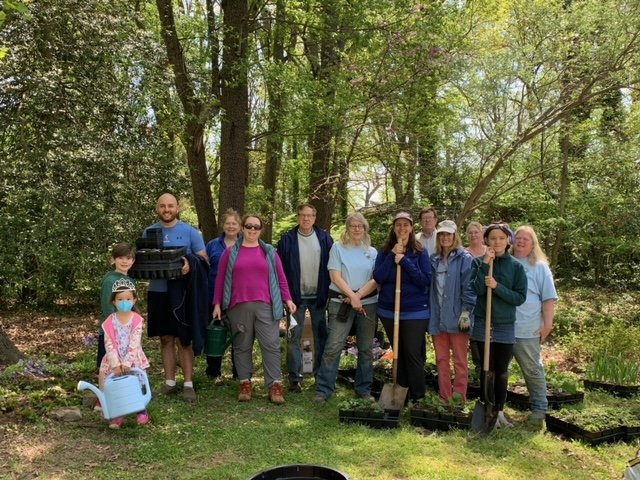Replant Anne Arundel was born in 2020 following a tree canopy study commissioned by the County to understand and reduce forest loss. The tree canopy study found a loss of 2,500 acres of forest in Anne Arundel County from 2013 to 2017 – the highest rate of loss among the urban counties in Maryland. Replant Anne Arundel is a partnership of Anne Arundel County, Maryland Department of Natural Resources, the Helena Foundation and Alliance for the Chesapeake Bay.
Led by the Watershed Stewards Academy, Replant Anne Arundel helps local communities restore their lost tree canopy. So far, Replant has installed over 11,000 climate resilient native trees in projects from Linthicum to North Beach and engaged thousands of residents in tree planting and maintenance.
The cornerstone of the Replant Program is a dedicated volunteer corps called Tree Troopers, who are specially trained by the Alliance for the Chesapeake Bay and WSA to design, install and maintain community tree projects. Over 100 active Tree Troopers have developed projects at churches, schools, libraries and residential communities throughout the County. Each tree installed by Tree Troopers comes from WSA’s Resilient Tree Species list, ensuring that it will thrive in the coming decades as our climate shifts. Most importantly, each tree will be monitored and maintained to ensure ongoing growth.











